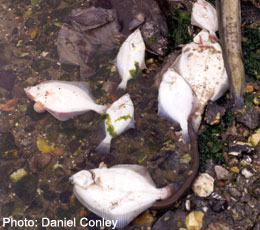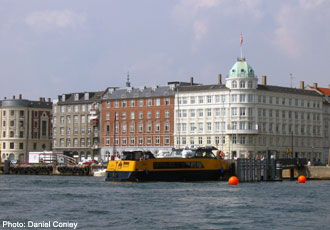 This northern European body of water is a salty, deep system that has been affected by humans for centuries. Following World War II, increasing fertilizer use and a growing population led to high inputs of nutrients to the system from rivers like the Oder and the Vistula. As happens in many marine systems, this increased nutrient load caused algae blooms which eventually caused low oxygen conditions. Efforts to decrease nutrient loads to the Baltic were successful in minimizing the size of the dead zone in the mid-1990s. Unfortunately, climatic conditions have caused dead zone area to increase again in recent years.
This northern European body of water is a salty, deep system that has been affected by humans for centuries. Following World War II, increasing fertilizer use and a growing population led to high inputs of nutrients to the system from rivers like the Oder and the Vistula. As happens in many marine systems, this increased nutrient load caused algae blooms which eventually caused low oxygen conditions. Efforts to decrease nutrient loads to the Baltic were successful in minimizing the size of the dead zone in the mid-1990s. Unfortunately, climatic conditions have caused dead zone area to increase again in recent years.

